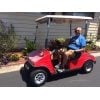I used a typical house wiring sealed duplex sized j-box on our old camper. That gave me room to install a two conductor terminal strip. I sealed it to the roof with 5200 and all wires exited through cable glands...
ntsqd - used to do exactly the same thing (terminal strips) in a j-box. Never had any issues at all within the plastic, sealed j-box itself. Even though I thought there could be a problem with condensation within the box, it never was an issue - connections were always dry and bright showing no signs of corrosion (and that was on the foredeck of a sailboat in an ocean environment with salt spray and waves washing across the deck). I've even used the bare minimum of butt connected wire covered only by weather proof heat shrink, exposed to the elements (and it worked fine for many years. The panels gave out but the wires were fine. For extreme conditions I used to use LanaCote on my electrical connections. My only issues were with delamination off my old flexible solar panels and corrosion of the connections under the sealed housing where the panel's wires exited. Of course, that was 20 years ago when flexible panels first made their exciting debut on the market and those panels typically came with bare wires and no connectors. I do believe that some of today's high-quality panels are much better when it comes to frustrating, physical delamination, and of course exponentially better when it comes to cell efficiency. So, originally I used semi-flexibles (for a curved deck), and then later used heavier weight, glass-covered rigid panels (where I had flat surfaces for mounting), and now back once again to the current generation of semi-flexibles, which have proven excellent, so far, mounted with z-bar aluminum on the roof of my camper. And while I like the idea of MC4 connectors or like you said, bare wires buried in a weatherproof j-box, I must admit that I have been using the FWC installed SAE to MC4 connection (with 90 degree bend) method and I have not had issues with either disconnection and/or corrosion. I've been in terrible hail storms, snow, rain, high winds, cold, hot, you name it, so far so good. If that changes, and I start seeing issues develop, I wouldn't hesitate to switch to a j-box, either with or without MC4s.
Rich
Edited by ri-f, 18 February 2021 - 07:23 AM.














